The view from the train window was a blur of greenery, a vast landscape of undulating hills dotted sporadically with small villages and the remnants of ancient fortresses crowning the hilltops, set amidst a sea of olive trees, that seemed to spread from the wake of the speeding train to the horizon. Seventy million olive trees, 24 different varieties, covering over three million acres in Andalusia produce 900,000 tons of olive oil and 380,000 tons of table olives annually. No wonder we’ve been enjoying Spain so much – the olives are so good!

We were nearing the end of our stay in Seville, but there were still destinations outside the city we wanted to explore before we departed Spain. Being so close to the ancient Moorish cities of Cordoba and Granada, how could we not visit? Plans were made to catch an early train from Seville and spend the day exploring the major sites in Cordoba, before continuing to an Airbnb rental in Granada for three days. There were always debates about budgeting, wanting to do it all and affording it are issues we continually faced during our two-year journey, fortunately the highly discounted rate we received for booking an apartment in Seville during the shoulder season made this side trip financially reasonable.
It was 152 BC when Pliny the Realtor, standing on the bank of the Guadalquivir River, toga blowing in the wind, turned to General Claudio Marcelo, the founder of Roman Cordoba, and with the swoop of his arm across the grand vista before them proclaimed future realtors’ favorite adage, “location, location, location!”

Situated along the last navigable section of the river, Granada prospered as a river port, exporting grain, wine and olives down the river to the Atlantic Ocean, where the goods were then sailed around the Rock of Gibralta into the Mediterranean Sea, eventually reaching ancient Rome. In the 1st century BC Roman engineers built a graceful, sixteen arch stone bridge that spanned 820ft across the Guadalquivir River and has been in continual use, with renovations of course, for two-thousand years.



The city continued to flourish for centuries under Visigoth rule and later Muslim conquest. In the year 1000 the city was estimated to have an enlightened and tolerant population of 450,000 Muslims, Christians and Jews, surpassing Constantinople, making it the largest city in Europe. The intellectuals of the city were renown throughout Europe for their contributions to the advancement of astronomy, medicine, philosophy, and mathematics.

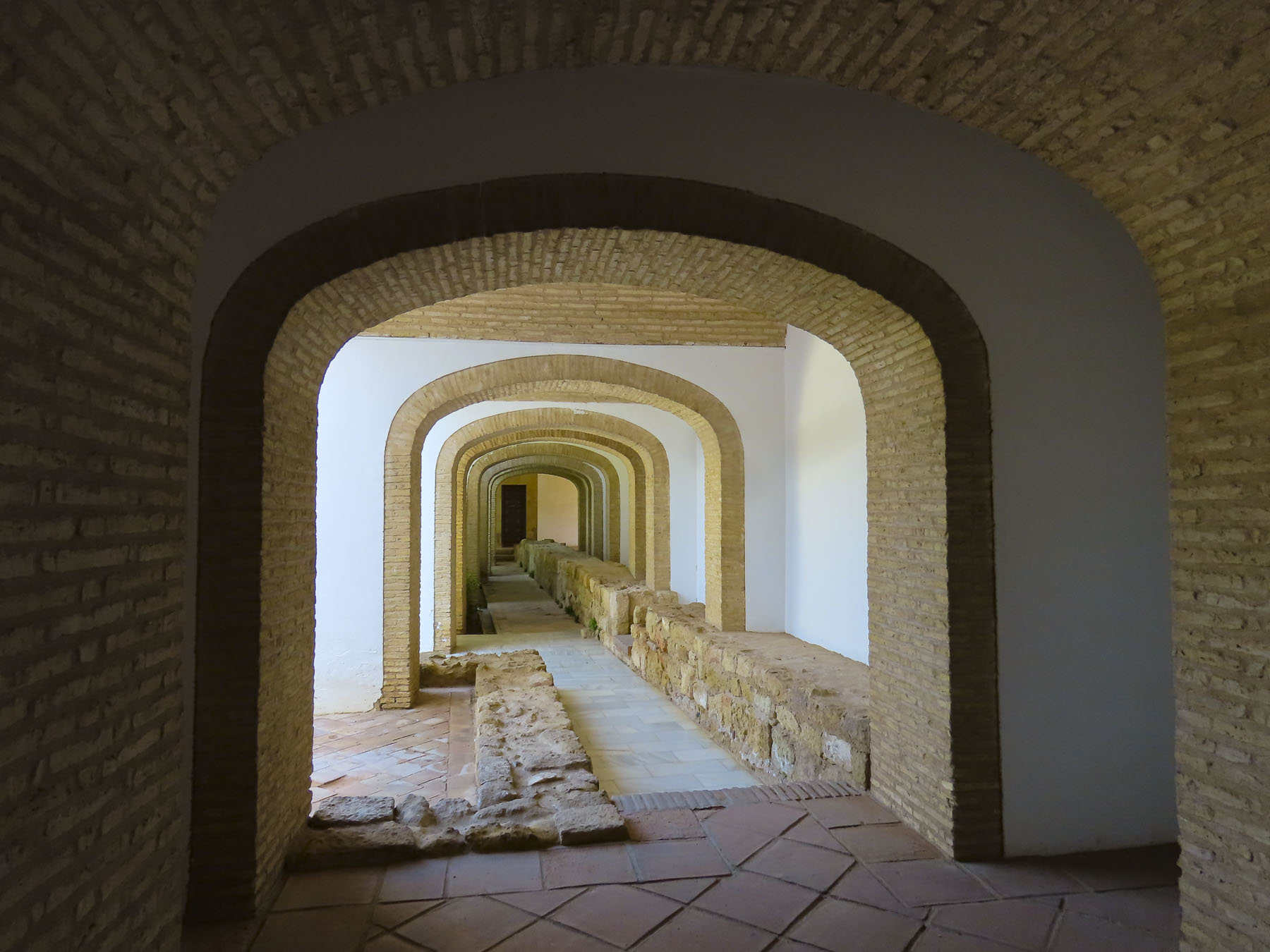



Cordoba slowly lost its significance as a riverport trading center after the reconquest when the waterway eventually silted up and navigation to the city became impossible. By the 1700s its prosperity had diminished, and its population reduced to only 20,000.

Our first stop was Córdoba’s Alcazar de los Reyes Cristianos, Castle of the Christian Kings, a royal residence and fortress built in the Mudéjar-style on the site of a former Muslim Fortress. While the castle is interesting, the exquisite formal gardens were a splendid oasis, wonderfully colorful even in early March. Here Christopher Columbus initiated his negotiations with Isabella I of Castile and Ferdinand II of Aragon to finance his voyage of discovery in 1492.



The city’s most famous landmark, the Mosque-Cathedral of Córdoba, was a short walk from the Alcazar. It’s an enormous structure occupying the equivalent of a New York City office block, part of which features an enclosed courtyard with a central fountain surrounded by an orange grove. The worn exterior was fascinating with its elaborate brickwork, and Moorish arches around the windows. The ancient doors into the space are offset by horseshoe shaped arches, a design influence copied from Visigoth architecture. Construction of the Great Mosque of Cordoba started in 786 AD and lasted for three-centuries as it was continually expanded.


Using 850 recycled Roman columns, topped with two tiers of arches, the Great Mosque of Cordoba’s prayer hall is a dazzling space with rows and isles of geometrically precise columns that seem to recede to infinity, in every direction. It was one of the largest mosques in the Muslim world when it was built.

Fortunately, in 1236 when Ferdinand III, king of Castile and León, captured the city, he was enamored with the mosque’s magnificent architecture, and he chose to leave it totally intact including the mihrab, an elaborate prayer niche in a wall that faces Mecca.


For a time, Muslims and Christians were allowed to pray in the same space. This lasted to 1499 when Muslims were expelled or forced to convert if they wished to stay in Spain. The original mosque remained unchanged until the mid-1500s when a towering high altar and choir loft were built in the center and numerous side altars were added along the exterior walls. The old minaret was finally incased within a magnificent, squared belltower.




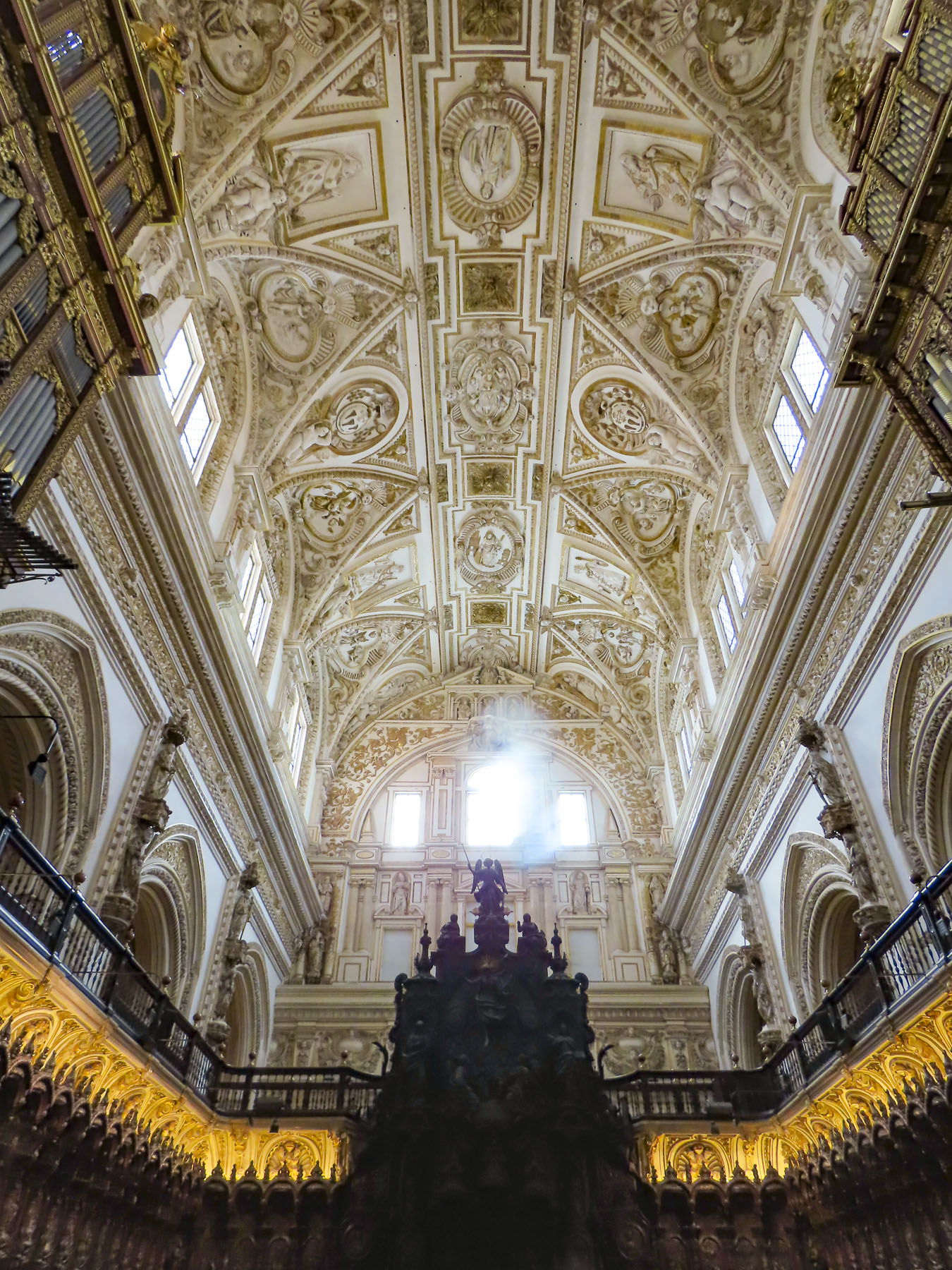
Afterwards we wandered through the narrow alleys adjacent to the cathedral, peeking into verdant courtyards that looked so lovely we were tempted to invite ourselves in, but did not. The only thing missing were flowers in bloom. The sun was not yet high enough in the March sky to warm the cold stones and prompt the first blossoms of spring.

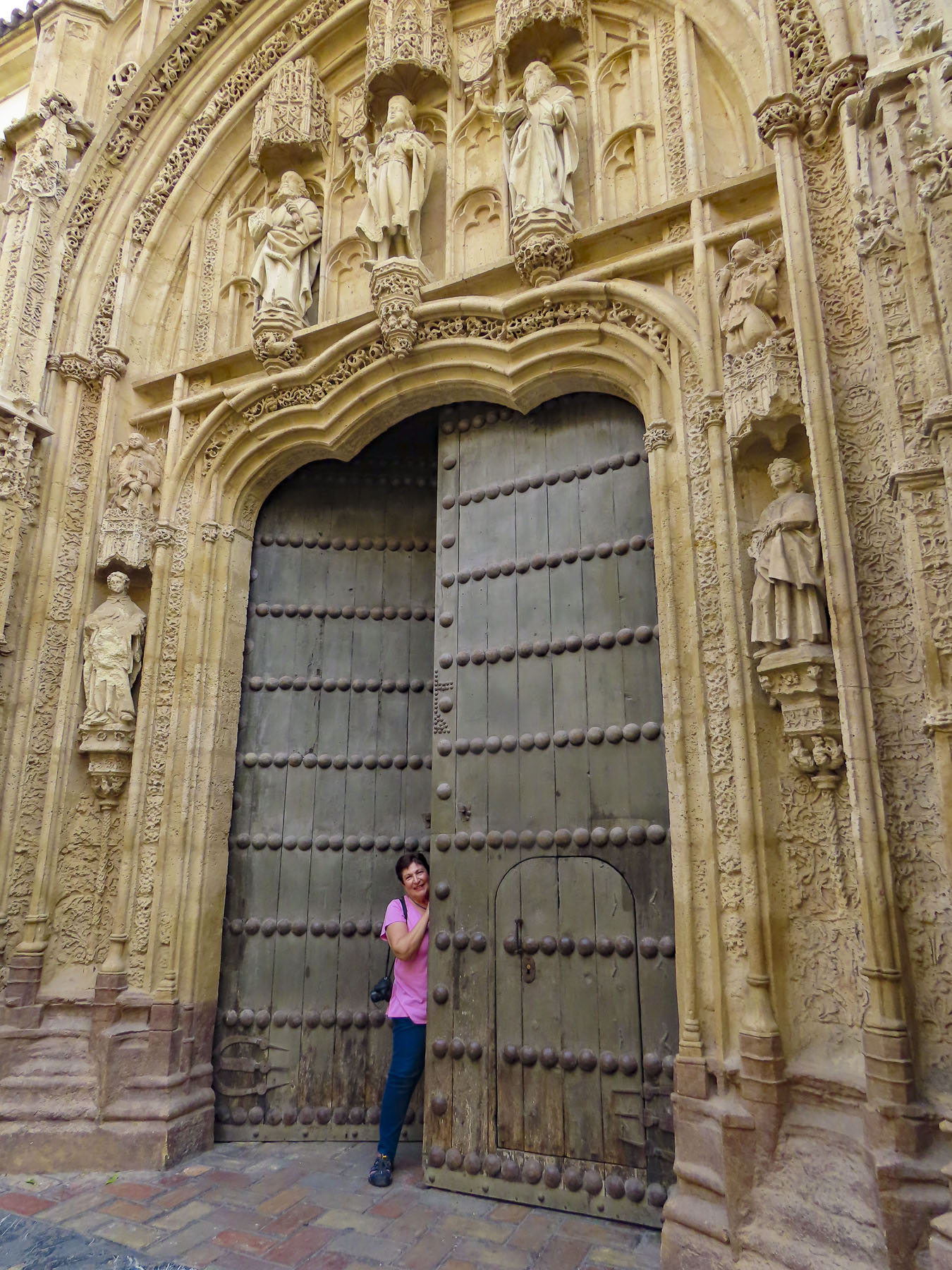



Later that evening upon our arrival in Granada we took an Uber from the train station to our rental in the Albaicín district, on Cta. de Alhacaba, a steep cobbled lane just down from Plaza Larga. It was an attractively gentrified apartment in an older traditional Spanish home, with a center courtyard, that had been divided into several units. Looking out from our window the next morning, we could see on a ridge above us the ruins of an extensive fortress wall, built during the 11th century Zirid kingdom.
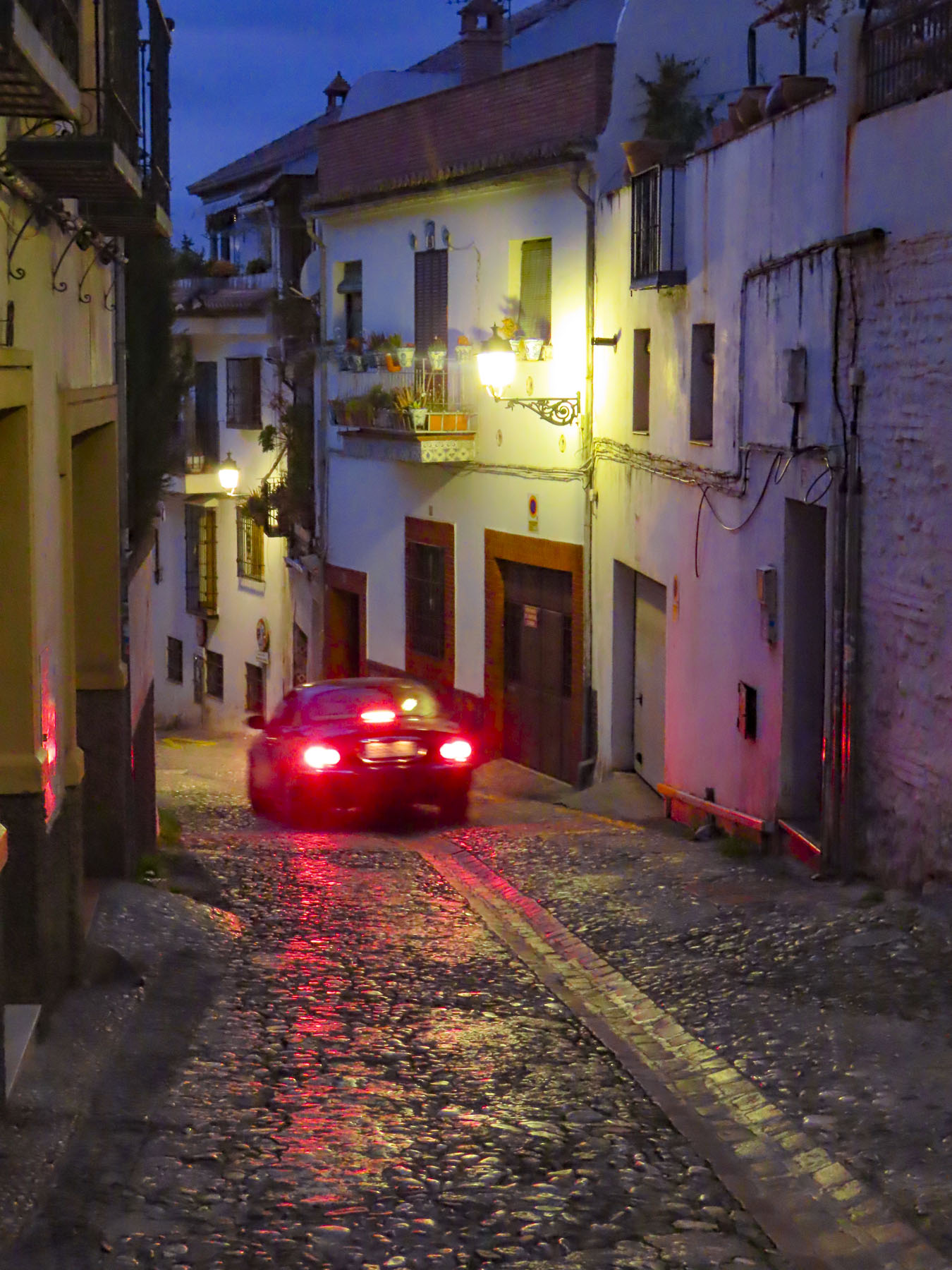

Getting our day underway, we walked uphill to Plaza Larga and ventured into the traditional colmados, a small grocery store where you tell the shop clerk everything you need and they pull it from the shelf behind the counter for you. Our Spanish was minimally up to the task.
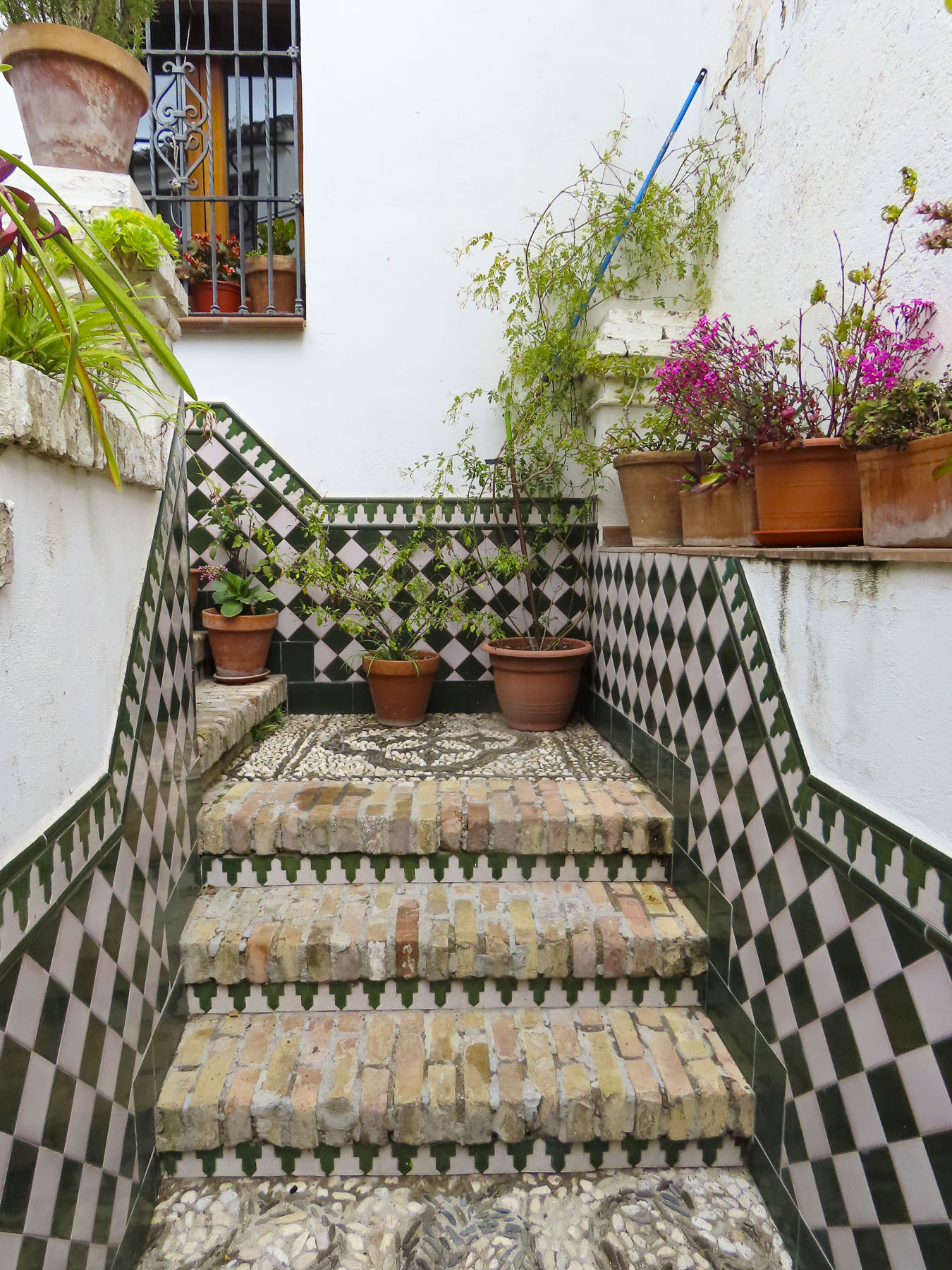


A few steps from the shop a limited section of the citadel wall containing the Arco de las Pesas has been renovated. Known as the Arch of Weights, this was an important entrance into the city where merchants had their goods weighed and taxed. Its distinctive zigzag tunnel was designed to slow and throw off balance any attacking enemy who had breached its door. The passageway’s vaulted ceiling now provides perfect acoustics for buskers. Crossing through we headed toward the Mirador de San Nicolás.

There are several overlooks on Albaicín hill, but the view of the Alhambra from San Nicolás Plaza was sublime. We stopped here several times as we explored this hilltop across the valley from the Alhambra. We enjoyed lunch and sangria on the terrace at El Huerto de Juan Ranas or dangled our legs over the edge of the mirador as the sun arced across the sky.


We watched the play of light change the shadows and the intensity of the red walls from which al-qal’a al-hamra, in Arabic the red fortress, takes its name. The palace is dramatically situated on a hill, with the snow-covered Sierra Nevada Mountain Range and Mt. Mulhacén, the Iberian peninsula’s highest peak in the background.


For centuries since the Muslim time, continuing into the 1950s, muleteers ran mule trains laden with fresh produce, fish, and merchandise from the coast up over the Sierra Mountains along a vast network of trails to Granada. Much of this 8-12 hour journey was done at night to take advantage of the cooler evening temperatures to ensure the quick arrival of perishable food. The mountains also provided sanctuary to the maquis, resistance fighters, in the 1940s and 50s who opposed the dictatorship of General Franco after the Spanish Civil War.



The historic Albaicín district is extremely hilly, think San Francisco hilly, a severe contrast compared to the flatness of Seville and Cordoba, but the labyrinth of narrow alleys that twist up and down the ancient hillside was intriguing. The Palacio de Dar al-Horra, “Home of the Honest Lady”- the mother of the last Emir of Granada, was an interesting example of 14th century Moorish domestic architecture, with its intricate Alfarje, carved wood ceilings, verandas, and courtyard.


Nearby we accidentally stumbled upon the 16th century Royal Convent of Saint Isabel and entered the courtyard in hope that its church was open. Unfortunately it wasn’t, but as we wandered we discovered the “cookie door.” Actually, it is a cabinet built into the wall of the convent with a door on each side that separates the cloistered nuns from the public. Ring the bell above the door, speak your order when someone answers and place your money in the cabinet and close the door. You will hear the other door open and then close when your dulces have been placed inside. It’s a sweet centuries old tradition which helps the nuns support their convent.



We were enjoying our stroll through the whitewashed alleys as we headed down the hillside toward Plaza Nueva, when “Splat Splat!” Honestly it felt like we had been shat upon by a flock of tourist hating birds. Something akin to the Spanish version of the Hitchcock movie classic. And the smell was awful! We don’t remember exactly what was said, but quickly a well-dressed middle-aged couple guided us into an empty plaza and pulled a huge roll of paper towels out of their bag and proceeded to “help,” clean the mess off our jackets as they patted us down and attempted to pickpocket us. I wish I had been quick witted enough to yell, I KNOW KARATE!, with an intimidating scowl. At least my wife would have burst into laughter and perhaps that would have broken their concentration. It was over in a flash and they vanished. Fortunately, we keep all our valuables under our clothing, not in any exterior pockets. Rattled, we continued on. A beautiful city, good tapas and sangria helped our mood rebound. Later that evening when I was reviewing the photos taken during the day, I spotted them in the lower corner of a picture taken moments before that encounter.





Bar los Diamantes and La Gran Taberna, located next to each other on Plaza Nueva, were excellent places to dine, and we tried them on separate days. At home in the states now we are making tapas inspired from dishes we tasted at both places.


Afterwards we walked along the thin ribbon of road that follows the Darro River through this section of the old town. It’s lined with numerous historical sites and bridges that cross the river; the ambience was wonderful.


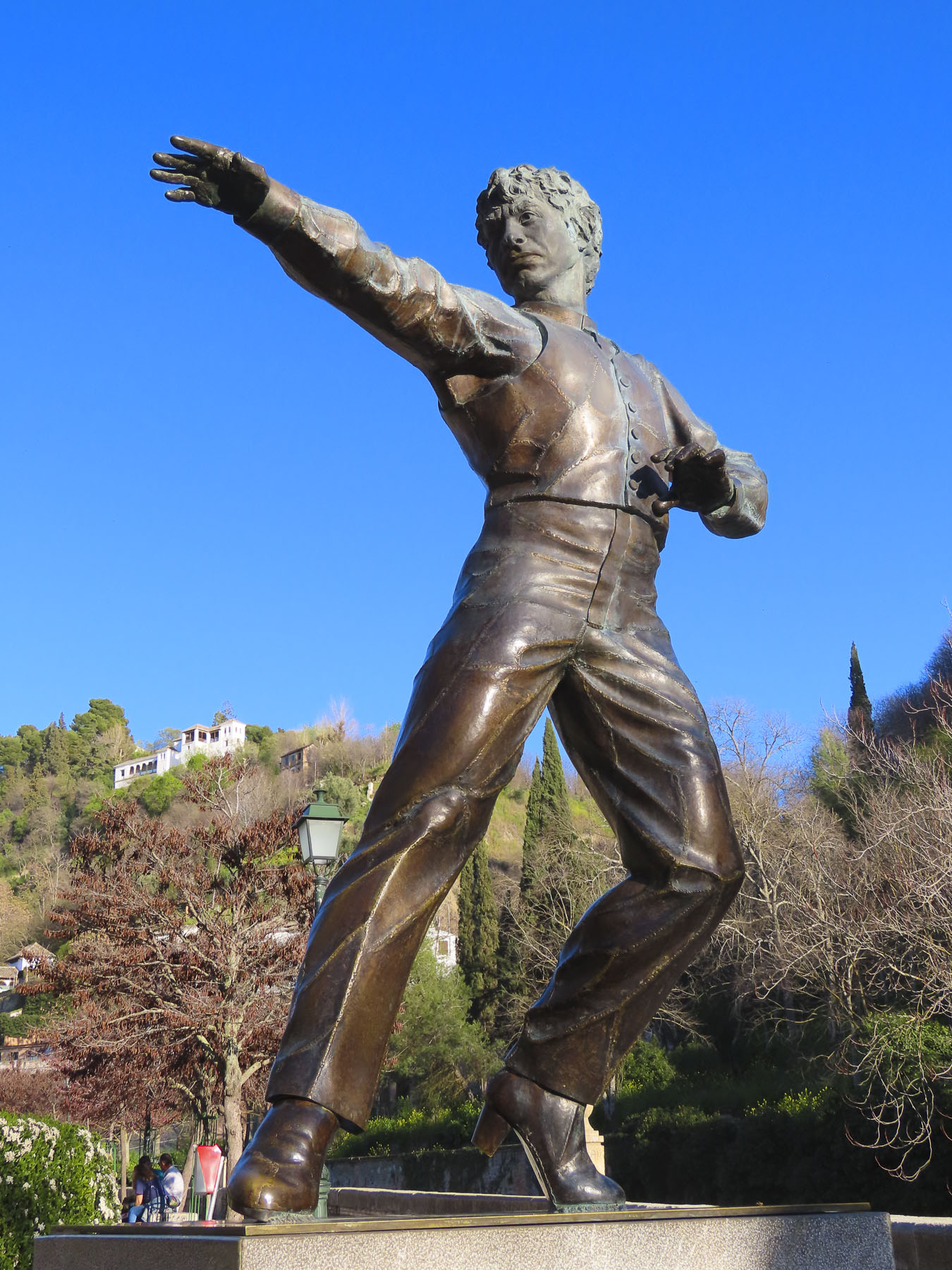



After a long day we couldn’t muster the strength to walk the steep uphill back to our apartment and opted to use the local bus. The routes in the historic section use micro-buses to navigate the ancient parts of Granada and took us pretty close to where we needed to go.
Only a limited number of people are allowed to visit the Alhambra each day, so we made reservations for a group tour early the next morning.
As we were leaving our rental the next morning, we couldn’t extract the key from the interior lock on the front door. We can’t recall how many doors we’ve unlocked during our travels, but this was a first! Apartment doors in Europe are intriguing, especially if they are in newly renovated buildings. The trend seems to be to install a very sturdy door with numerous deadbolts that insert into the door frame with the turn of single key. They appear to be designed to thwart any home invasions or resist the battering ram of a S.W.A.T team. The rental agent asked us to stay at the apartment until a locksmith arrived, without offering a time. That was unacceptable and we asked them to have the door repaired by the end of the day. We took the key to the courtyard with us and hoped for the best.
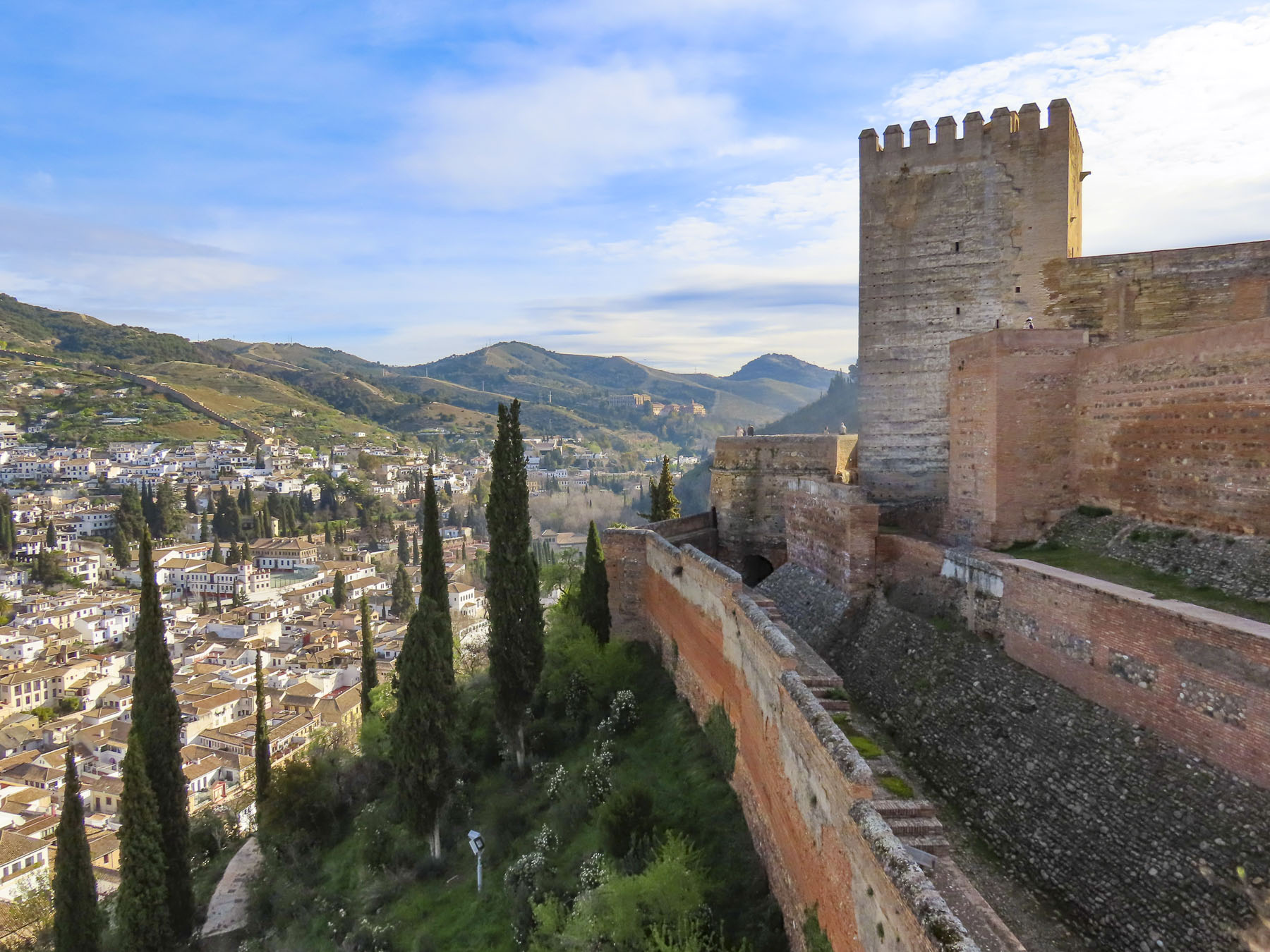


The Alhambra is massive and originally served as a fortress for many centuries before Mohammed ben Al-Hamar, the first king of the Nasrid dynasty arrived in the 13th century and established it as his royal residence. Each subsequent Muslim ruler continued to add and beautifully renovate every interior surface lavishly adorned yesería, intricately carved or cast stucco featuring arabesque, geometric and calligraphic designs. Later the Christian monarchs would introduce mudejar tiles and Romanesque, Gothic and Baroque techniques to various building sprees.

The most significant Spanish contribution to the Alhambra was the Palace of Charles the V. It is an immense renaissance style building with a two tiered colonnaded balcony surrounding a circular courtyard at its center.




Construction started in 1527 and was continually interrupted over the next 430 years and was eventually abandoned until the government dedicated funds to finish it by 1957. Somehow this amazing amalgamation of diverse architectural styles at the Alhambra creates a unique and satisfying visual harmony.


We spent the rest of the afternoon exploring the Catedral de Granada Royal and next to it the Capilla Real de Granada. Both were built over the ruins of the Granada’s Grand Mosque in the old medina after the reconquest. The cathedral features a towering white and gold interior and a stained-glass cupola above the high altar.


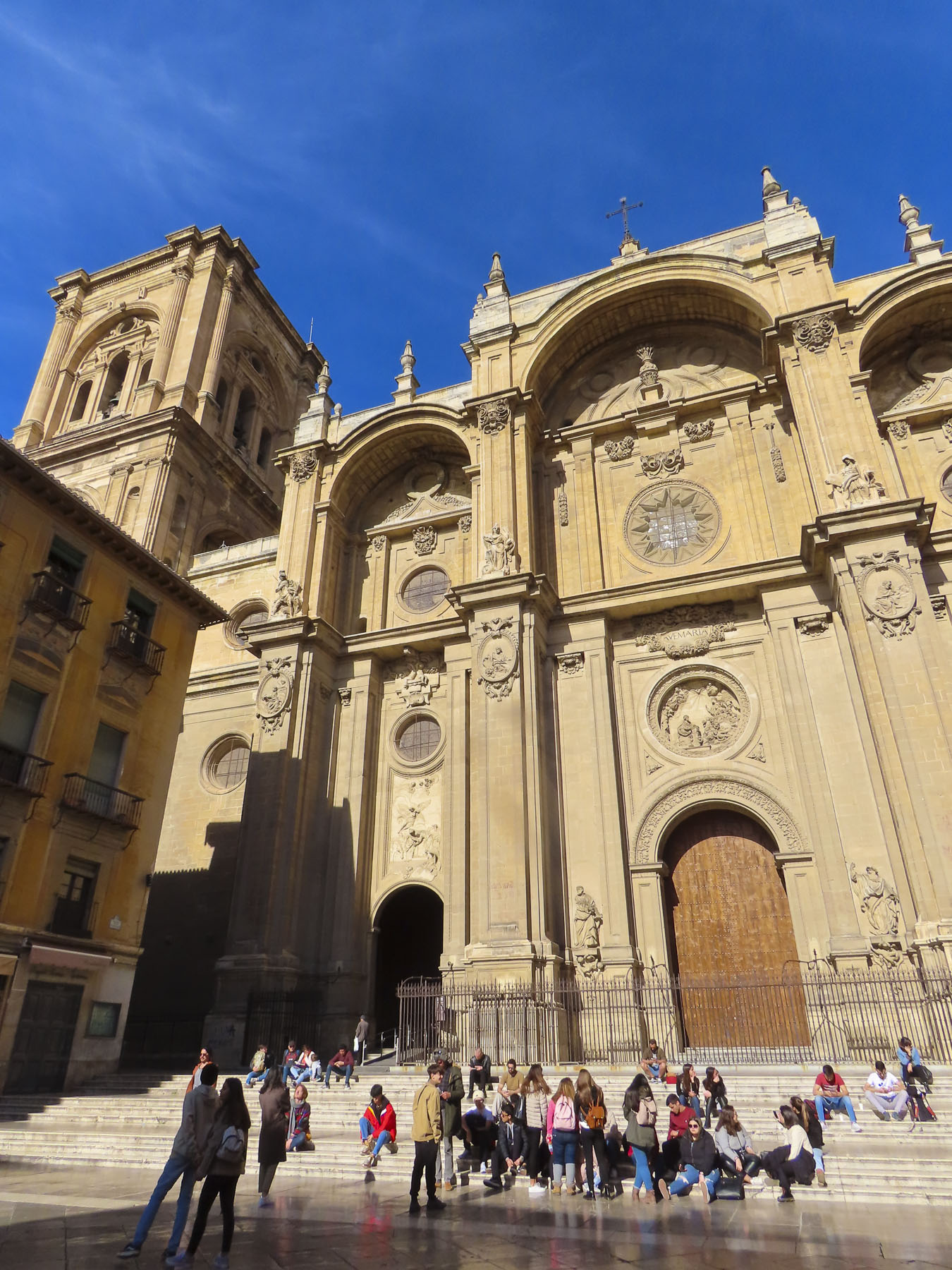


The Capilla Real de Granada is a burial chamber for the Catholic Monarchs Queen Isabella I and King Ferdinand and features their ornately carved marble tomb. Joanna of Castile, Queen of Castile and Aragon, and her husband Philip I “the Handsome” of Castile, are entombed next to them in an equally elaborate sarcophagus. The Sacristy-Museum here also displays gilded church panels, along with renaissance paintings from Flemish, Italian and Spanish artist. The monarchs’ crowns and scepter are also on display.



Across the lane the wonderful Moorish architecture of Palacio de la Madraza, a former Islamic school dating from the 1300s, has been well preserved.


To our relief the door lock was fixed when we returned to the apartment that evening. Though to our dismay the landlord left a bill for the locksmith’s services of 150€! Attached to the invoice was a note that said the locksmith could not find any fault with the door, that it was in perfect working, and we were responsible for the bill. We did not agree that this was our “operating error” and questioned it. Thinking it was a maintenance issue and ultimately the apartment owners’ responsibility. There was an exchange of text messages, with the rental agent demanding payment. We refused to pay. Things deteriorated – ancient ancestors and future generations to come were flavorfully cursed. We left early the next morning to avoid any confrontation.

With a half day to fill before our train departed, we dragged our suitcase clickity clacking over the cobblestones of the historic center as we made our way to the Basilica de San Juan de Dios. Built in the 1700s, when a seemingly unending supply of gold and silver flowed back to Spain from their colonies in the Americas, the church is a temple not only to Christ, but a shrine to all things Baroque, with every surface ornately detailed, much of it gilded. The sacristy and the other rooms behind the altar hold a museum-like collection of artwork, precious religious objects, and gold adorned reliquary.




Across the street at Candelas Bocadilleria we sat at a table in the sun and enjoyed the best churrerias of our time in Spain.

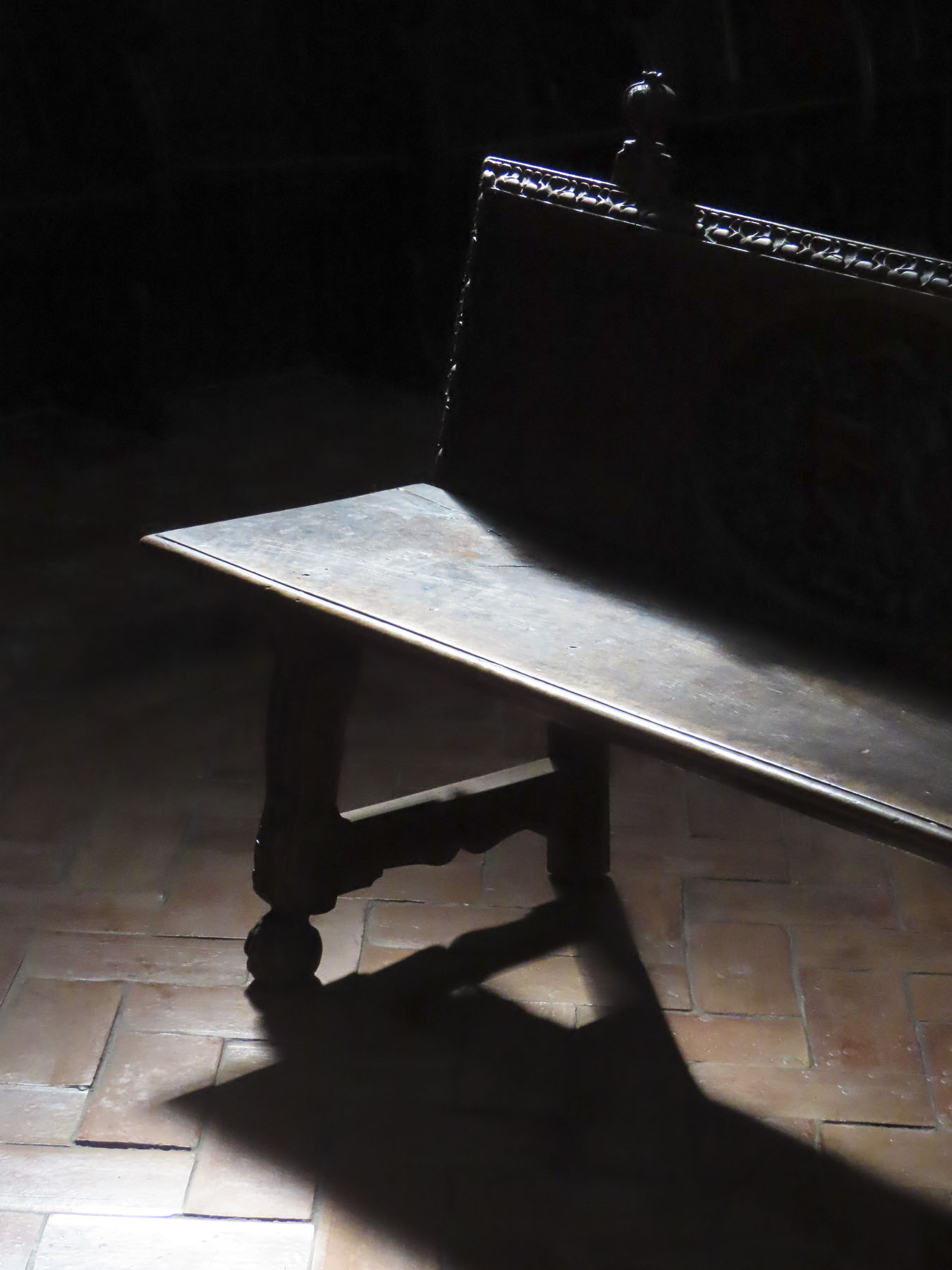
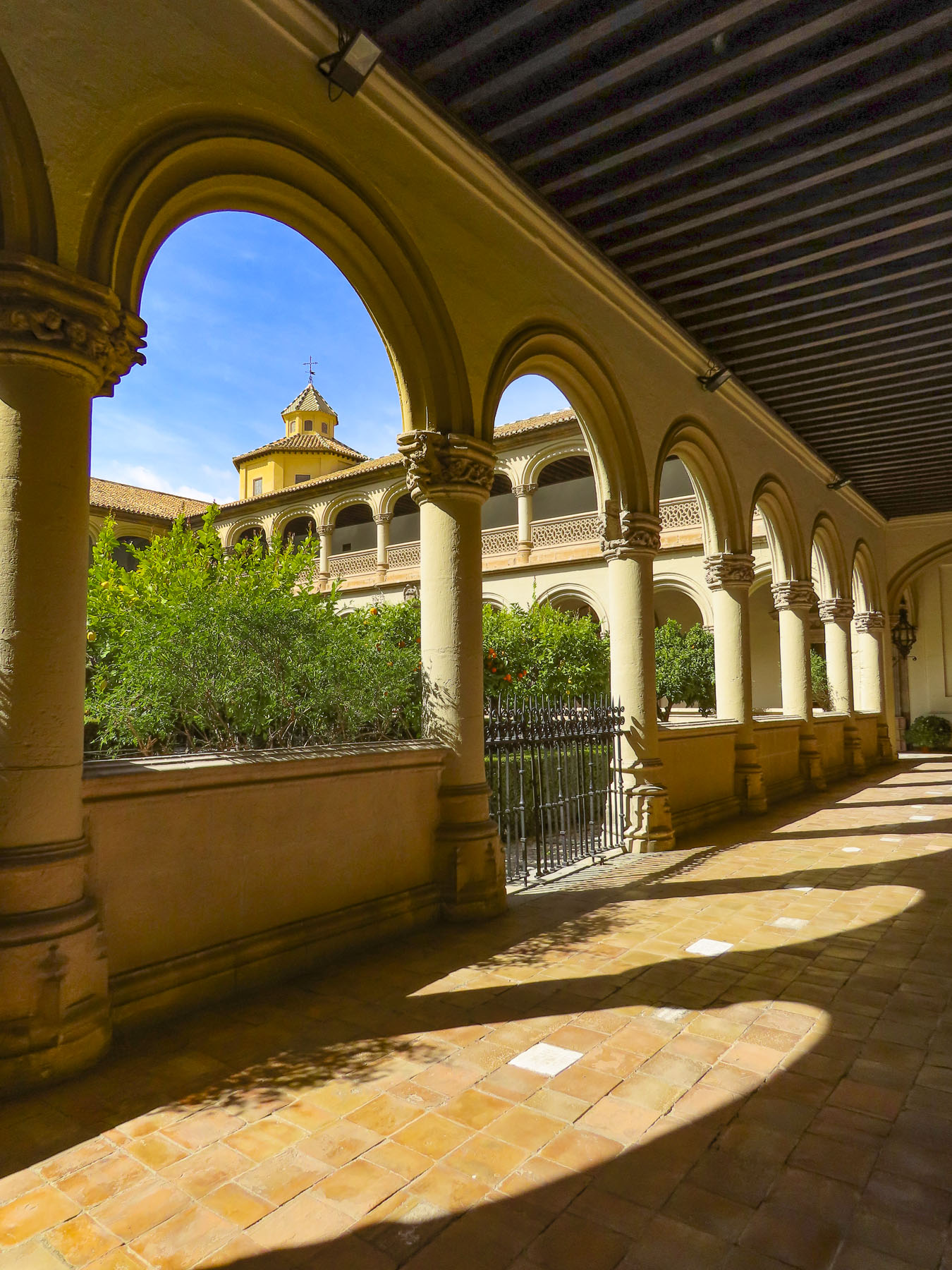
Two blocks away and two centuries older, the Monasterio de San Jeronimo (1504) stands as the first great Renaissance style achievement of Spanish architect Diego de Siloe, who was trained in Italy. He followed this with the Grand Cathedral of Granada (1528.) This royal monastery was the first in Granada commissioned by Queen Isabella I and King Ferdinand after the conquest of the city. It’s a massive structure with a two-tiered cloister surrounding a large courtyard fully planted with orange trees.



The monastery’s main chapel is cavernous with a barrel-vaulted ceiling that leads your eye to a towering gilded high altar, minutely detailed with religious iconography. The tomb of El Gran Capitan, Fernandez de Cordoba, lies in the chapel. A hero, he is credited with several reconquests across Andalucía, and after a ten-year campaign, the surrender of Granada from Boabil, Muhammad XII of Granada, the 22nd and last Moorish Sultan in Spain.


We barely scratched the surface of all the places to see in Granada. It’s a good excuse to plan a return, our own Reconquista, of this beautiful and fascinating region in the future.
Till next time, Craig & Donna

